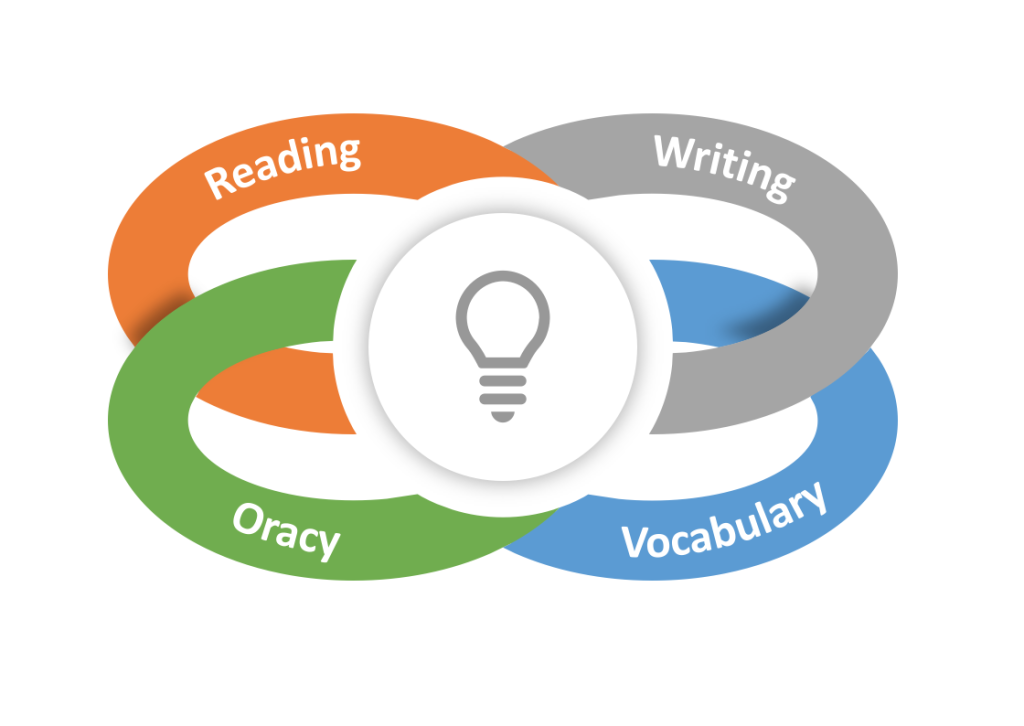There are a vast array of barriers and problems that attend literacy development. In Part 1, it was tricky to limit it to only ten! And yet, the gains from developing literacy are so significant – for many pupils they can prove genuinely life-changing – that we keep making literacy a significant focus of our work in schools.
For a long while, I have used the analogy of Sisyphus to describe the role of the Literacy Coordinator (Literacy Lead, Reading Lead, and similar). It evokes an apt image of arduous effort and commitment. It also represents the reality that literacy is never quite done too.
One detail in the Sisyphus/literacy analogy I have since refined is the recognition of the targeted focus on one boulder. Sisyphus pushes the mammoth boulder to the top of the mountain, but we should recognise it is manageable enough to move, and it is at least a singular boulder. By comparison, I think we can sometimes try and push too many literacy boulders up the mountain, each proving significant in their own right.
The Literacy Matrix and targeted implementation
It is helpful to try and make the implementation of a literacy strategy more targeted. Instead of attempting to haul one mammoth literacy boulder up the mountain, we can separate out important aspects of literacy into something more manageable for both literacy leads and teachers. As a result, we can at least heave a boulder that is within our grasp.
The following ‘Literacy Matrix’ offers a manageable chunking down of the complexity, so that schools can focus on one area of literacy that is most timely and actionable. Of course, these areas overlap and interact in complex and nuanced ways, and can sometimes be hard to separate out, but more simply disaggregating them it allows for purposeful focus and, crucially, it meets busy teachers where they are.

In working with schools and Trusts, I have found it is typical that lots has already been ‘done’ to support literacy. Those mountain paths are well trodden! As a result, identifying the next area to address – that builds on what has gone before – is a sensible implementation decision.
The identification of the appropriate choice from the Literacy Matrix should also be rooted in the specific needs and challenges of pupils in the school or Trust. As I indicated in my previous blogs in the series, finding good quality assessments to help with the job is tricky, but attempt to discern gaps in pupils’ literacy learning we must.
We can consider our identification of our literacy follow utilising the following questions:
- What assessment patterns are revealing to us about literacy needs?
- What pupil problems are we solving that are both meaningful and manageable?
- What areas of literacy are receptive for improvement and change?
- What existing literacy practices and strategies are we building upon?
- What existing literacy practices and strategies are we stopping (the tricky, time-consuming challenge of ‘de-implementation’)?
Most schools and trusts sensibly identify one priority area per year. Not only that, but the sequencing of priorities is also cohered and well thought through. If I can torture the mountain metaphor one step further, we can treat each annual priority as something akin to reaching various base camps along the journey to scaling the daunting summit. With a little more time, pausing to monitor and evaluate progress, we give our literacy strategy a better chance to succeed and to be sustained.
In my Part 2 of the series, I identified oracy as a popular priority right now, but one that is subject to likely challenge and predictable failures. We should ask, not only what problem is it solving for our pupils, but how manageable are practice changes for our teachers?
In the spirit of shrinking boulders, the notion of further breaking down the challenge is an attractive one if we are to effectively implement our new literacy priority. Many schools, understandably, begin by characterising what are complex priority areas into smaller, actionable teaching strategies.
In recent Trust and school visits, I’ve noted schools starting with Walkthrus, TLAC strategies, or EEF guidance report recommendations to identify specific oracy practices. We can start with the ‘why’ of our literacy priority – along with the vital moral imperative of improving literacy – but teachers need concrete approaches to enact and practice. By starting small, with named practices, we start to make the journey up the mountain feel surmountable – even attractive.
Literacy Support Factors
In my recent researchED national talk, I proposed the following as key support factors for any literacy strategy:
- Accessible high-quality assessments (along with training and moderation time).
- Consistent shared language.
- A clear ‘Theory of Change’ (put simply, a shared understanding of what is expected to change, the activities, and the expected/hoped for outcomes).
- Sustained and effective professional development.
- Fewer priorities that require practice change.
- Specialist support for specific issues e.g., speech and language (especially if focusing on Oracy).
- Consistent, supportive literacy leadership (and a strong senior leadership mandate).
- Intelligent adaptations for phase and subject where appropriate.
- High quality available programmes (including those for high need pupils).
- Supportive wider policy environment.
You could justifiably write hundreds more words on the above list alone, but this blog is about manageable solutions and small boulders, so it is time to draw it to a close.
Now it’s time to chip away at that literacy priority boulder and get pushing!
